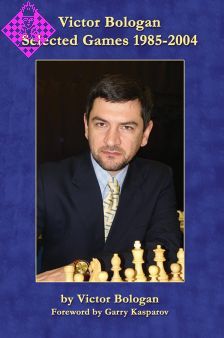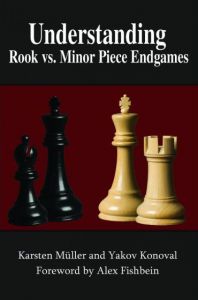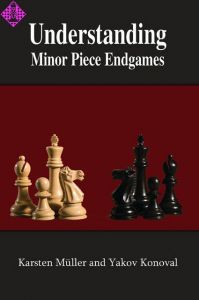Article Number
LXBOLSG19852004
Author
Victor Bologan: Selected Games 1985 - 2004
236 pages, paperback, Russell Enterprises, 1. edition 2007
Discontinued
Foreword
In this, our computer age, very few strong players would think to write a book. It's a huge task, requiring a great deal of time; and from the viewpoint of the chessplaying professional, it doesn't provide sufficient material compensation. Besides, writing a book requires you to have ideas that would make it interesting to a wide chess audience. So it was with great interest that I took up Victor Bologan's manuscript. The size of the manuscript alone already made an impresand knowing Victor, I had no doubt that I would find many interesting thoughts on chess inside.
This is a book that ought to be read by every chessplayer who is serious about continuing to mature as a player. First and foremost, of course, this would be young players - all who are certain that they can glean everything there is to be known about chess off the Internet, or find it in today's chess databases. In point of fact, nothing can replace the printed word, for maturity depends upon underwhat has already been done, as well as knowing how to reprocess reinformation to accommodate it to our own peculiarities of style, and to the quirks of our own chess character. Victor gives a detailed description of his own development - how he accumulated chess experience in Kishinev, where he was fortunate enough to have worked with that one-of-a-kind character, Vyacheslav Chebanenko, who created his own, unique - certainly not "mainstream" - but a most unordinary philosophy of chess. Then it was on to Moscow, where he worked with Zigurds Lanka and Mark Dvoretsky.
It is customary to divide chessplayers into those who calculate variations, and those who devise schemes, and depend mostly upon the game's strategic eleChebanenko, Lanka, and Dvoretsky are united (as Victor also describes in this book) not only by their ability to think up schemes, but also by a type of thinking that is quite rare these days: thinking in general philosophical chess catwhere a concrete move, or even a complex plan, figures as part of some overall conception. In many games in this book, we can trace such an unbreakbond, which allows us to get the clearest possible picture, both of the develof the particular game under discussion, and of the game of chess as a whole. Each of these trainers made his contribution to the creation of the chess and human profile of the author, who after a short creative hiatus (working for the stock exchange), entered the chess elite, as confirmed by his brilliant victory in the Dortmund super-tournament.
It is most important that this book contains many truly annotated games. I wish to emphasize that word - "truly" - because today, the majority of leading players confine themselves to the simplest notes to their games, "Informant-style," or else write some primitive stuff for New In Chess. You can find more complex texts in 64 magazine - mostly written, naturally, by the Russian-speaking guard, but, generally, these texts restrict themselves to notes on the game itself. It's not easy to find a connected series of annotated games. Even in books that leading grandmasters still publish (which are becoming rarer and rarer), their games are usually presented in a "box of chocolates" format, with no discernible internal connection among them - just a bunch of different "treats" in pretty wrappings. By contrast, it is obvious that the games in Bologan's book were chosen as mileon the path of his creative maturation. In addition, the reader will find many interesting observations, demonstrating this grandmaster's independent spirit. And although there would be many of those observations that I would disagree with, nevertheless they set forth the author's position, which is also somewe seldom see in the world of chess, where much is presented in watered-down, lowest-common-denominator fashion.
This book contains games with many different types of plans, beginning with the most varied kinds of openings. Today, it's the fashion to expand one's opening repertoire, incorporating different - sometimes structurally contradictory - openthis book will give you advice, usually from the author's perspective, on how to choose an opening. The author talks about the method he used to make his choices, and about the concrete philosophy standing behind each decision. These could be elements of chess psychology relating to a specific opponent, or perhaps changes in creative attitudes stemming from work with different trainers. Or it could be just following the current fashion in chess - for every chessplayer, even the most creative, is obliged to study the development of chess thinking, and try to keep up, to stay always on the cutting edge of contemporary chess developAnd here too, in practically every game, one may find general recommen"fine-tuned" to the concrete particulars of each position. I find this sort of advice to be the most valuable, because general advice that is not illustrated by a concrete example loses the greater part of its practical value.
Of special interest in the book are the quotes from Bologan's diary, which chronicle not only chess events, but also the author's personal experiences. It is perhaps just this combination of chess analysis and the presentation of Bologan's own personal feelings, captured at the tensest moments, which allow us to understand more accurately the very workings of decision-making - and more: the lessons we extract from losses, as well as from wins. Even though the book quite clearly makes the point that it's considerably harder to extract lessons from victory, and this idea of the complexity of the winning experience is very well presented: a falloff of results is correctly connected to the peculiarities of human psychology, which lacks the capacity to evaluate a winning series objectively. We have a much more adequate response to a loss, which forces us to put on our thinking caps and puzzle out the reasons for our misfortune.
The book also does a good job of describing the complex relationships between teacher and pupil. Today's chessplayers frequently change roles, helping and asone another; and besides the traditional "teacher - student" relationships, there are also relationships where players serve as "sparring-partners," aiding each other either for a specific tournament, or in preparation for a series of imevents. Inasmuch as Victor has been "on both sides of the barricade," he gives a pretty detailed and interesting description of this mutual-aid system. Aninteresting discussion concerns the process of coming up with ideas in "think-tanks," where a group of players all work in the same direction, and as a result of their productive interaction, succeed in raising, not just their own, but all of our understanding of chess to a whole new level.
At all events, one may hope that this book will inspire young chessplayers to a deeper study of the chess classics, and to a more concentrated work ethic, not just with computer databases, but also with printed chess materials. But my main hope would be that it would instill in them a desire to annotate their own games. Even though many of them today would probably read the advice of the classics with a bit of a smile - in our computer era, recommendations from the nineteenth and twentieth centuries tend to seem "past their sell-by date" - nevertheless, Botvinnik's dogged insistence on analyzing your own games remains true today. For it is only the annotation of actual games that makes a player grow. And, of course, we can only dream of a time when reading this most interesting book will inspire some strong chessplayer to spend some of his (or her!) valuable time in writing yet another extraordinary chess book.
Garry Kasparov
Introduction
In my first year at the Moscow Instiof Physiculture, I approached Zigurds Lanka for help in mastering the writer's craft, and after a short pause, the experienced chess journalist said:
"Well, here's a pencil and paper."
In the fifteen years since then, I have become a grandmaster, and I write for various chess publications. In short, the aphorism offered by the "Old Trainer," as Lanka likes to style himself, must have helped.
Chess journalism is, above all, facts - frequently dry facts, sometimes unbefacts - but facts, nonetheless. I went to a tournament; I played, I saw, I wrote about it; I went on to the next tournament. But in spite of the comforts of the niche I occupied, a man still wants to move forward, to look for something new. And so I found myself wanting, not merely to describe the next tournament and annotate a game, but to dive deeper - to leave the narrow banks of the journalist's article for the vast sea of the autobiographer's chronicle. Especially now that I have matured enough, chessically speaking; and working on one's own games can't hurt - in fact, it is the cornerstone of any chessplayer's growth.
To write about oneself is at once simple and far from easy. On the one hand, the best that can come from the writer's pen are always his own personal, deeply felt experiences. On the other hand, it is hard to hold on to one's objectivity, when the subject under discussion is
one's own beloved self. Nevertheless, I am resolved! I rejected the argument that a book would cost me too much time and energy, and that my chess level would suffer as a result. The good exoffered by Shirov, Kramnik and Anand, all of whom have already writtheir autobiographies, convinced me that I was indeed swimming with the current. Of course, the fact that I had already annotated many of my games in such publications as 64, New In Chess, Europe Echecs, Schach, Peon del Rey, and Informant made my work much easier. Naturally, the best of those published games form the backbone of this book. It was precisely because of this previous work (done while the water was still warm, so to speak) that I was able to retain both the considerthat guided me in the course of play and the conclusions I reached af
My trainers Solonar, Chebanenko, Lanka, and Dvoretsky, who are all unique personalities, have undoubtedly left recognizable, positive imprints on my play, and it is to them alone that I owe the greater part of my success. Being more of a creative performer than a painstaking composer, I have had the pleasure of being immersed in whole systems of Chebanenko's ideas; I have absorbed Lanka's "routines" first hand; and I have solved reams of exercises from Dvoretsky's notebooks. All good preparation for throwing myself fearinto the most complicated calcuThe games presented here are mostly associated with these trainers -especially in the earlier sections. Unfortunately, the limited scope of the book did not allow me to go on at greater length about these extraordinary people. And while Dvoretsky's creative output is quite accessible, thanks to his
exceptional work-ethic, which has led to the publication of very many books and articles, the books on the chess views of my other trainers have yet to be written.
Victor Bologan
In this, our computer age, very few strong players would think to write a book. It's a huge task, requiring a great deal of time; and from the viewpoint of the chessplaying professional, it doesn't provide sufficient material compensation. Besides, writing a book requires you to have ideas that would make it interesting to a wide chess audience. So it was with great interest that I took up Victor Bologan's manuscript. The size of the manuscript alone already made an impresand knowing Victor, I had no doubt that I would find many interesting thoughts on chess inside.
This is a book that ought to be read by every chessplayer who is serious about continuing to mature as a player. First and foremost, of course, this would be young players - all who are certain that they can glean everything there is to be known about chess off the Internet, or find it in today's chess databases. In point of fact, nothing can replace the printed word, for maturity depends upon underwhat has already been done, as well as knowing how to reprocess reinformation to accommodate it to our own peculiarities of style, and to the quirks of our own chess character. Victor gives a detailed description of his own development - how he accumulated chess experience in Kishinev, where he was fortunate enough to have worked with that one-of-a-kind character, Vyacheslav Chebanenko, who created his own, unique - certainly not "mainstream" - but a most unordinary philosophy of chess. Then it was on to Moscow, where he worked with Zigurds Lanka and Mark Dvoretsky.
It is customary to divide chessplayers into those who calculate variations, and those who devise schemes, and depend mostly upon the game's strategic eleChebanenko, Lanka, and Dvoretsky are united (as Victor also describes in this book) not only by their ability to think up schemes, but also by a type of thinking that is quite rare these days: thinking in general philosophical chess catwhere a concrete move, or even a complex plan, figures as part of some overall conception. In many games in this book, we can trace such an unbreakbond, which allows us to get the clearest possible picture, both of the develof the particular game under discussion, and of the game of chess as a whole. Each of these trainers made his contribution to the creation of the chess and human profile of the author, who after a short creative hiatus (working for the stock exchange), entered the chess elite, as confirmed by his brilliant victory in the Dortmund super-tournament.
It is most important that this book contains many truly annotated games. I wish to emphasize that word - "truly" - because today, the majority of leading players confine themselves to the simplest notes to their games, "Informant-style," or else write some primitive stuff for New In Chess. You can find more complex texts in 64 magazine - mostly written, naturally, by the Russian-speaking guard, but, generally, these texts restrict themselves to notes on the game itself. It's not easy to find a connected series of annotated games. Even in books that leading grandmasters still publish (which are becoming rarer and rarer), their games are usually presented in a "box of chocolates" format, with no discernible internal connection among them - just a bunch of different "treats" in pretty wrappings. By contrast, it is obvious that the games in Bologan's book were chosen as mileon the path of his creative maturation. In addition, the reader will find many interesting observations, demonstrating this grandmaster's independent spirit. And although there would be many of those observations that I would disagree with, nevertheless they set forth the author's position, which is also somewe seldom see in the world of chess, where much is presented in watered-down, lowest-common-denominator fashion.
This book contains games with many different types of plans, beginning with the most varied kinds of openings. Today, it's the fashion to expand one's opening repertoire, incorporating different - sometimes structurally contradictory - openthis book will give you advice, usually from the author's perspective, on how to choose an opening. The author talks about the method he used to make his choices, and about the concrete philosophy standing behind each decision. These could be elements of chess psychology relating to a specific opponent, or perhaps changes in creative attitudes stemming from work with different trainers. Or it could be just following the current fashion in chess - for every chessplayer, even the most creative, is obliged to study the development of chess thinking, and try to keep up, to stay always on the cutting edge of contemporary chess developAnd here too, in practically every game, one may find general recommen"fine-tuned" to the concrete particulars of each position. I find this sort of advice to be the most valuable, because general advice that is not illustrated by a concrete example loses the greater part of its practical value.
Of special interest in the book are the quotes from Bologan's diary, which chronicle not only chess events, but also the author's personal experiences. It is perhaps just this combination of chess analysis and the presentation of Bologan's own personal feelings, captured at the tensest moments, which allow us to understand more accurately the very workings of decision-making - and more: the lessons we extract from losses, as well as from wins. Even though the book quite clearly makes the point that it's considerably harder to extract lessons from victory, and this idea of the complexity of the winning experience is very well presented: a falloff of results is correctly connected to the peculiarities of human psychology, which lacks the capacity to evaluate a winning series objectively. We have a much more adequate response to a loss, which forces us to put on our thinking caps and puzzle out the reasons for our misfortune.
The book also does a good job of describing the complex relationships between teacher and pupil. Today's chessplayers frequently change roles, helping and asone another; and besides the traditional "teacher - student" relationships, there are also relationships where players serve as "sparring-partners," aiding each other either for a specific tournament, or in preparation for a series of imevents. Inasmuch as Victor has been "on both sides of the barricade," he gives a pretty detailed and interesting description of this mutual-aid system. Aninteresting discussion concerns the process of coming up with ideas in "think-tanks," where a group of players all work in the same direction, and as a result of their productive interaction, succeed in raising, not just their own, but all of our understanding of chess to a whole new level.
At all events, one may hope that this book will inspire young chessplayers to a deeper study of the chess classics, and to a more concentrated work ethic, not just with computer databases, but also with printed chess materials. But my main hope would be that it would instill in them a desire to annotate their own games. Even though many of them today would probably read the advice of the classics with a bit of a smile - in our computer era, recommendations from the nineteenth and twentieth centuries tend to seem "past their sell-by date" - nevertheless, Botvinnik's dogged insistence on analyzing your own games remains true today. For it is only the annotation of actual games that makes a player grow. And, of course, we can only dream of a time when reading this most interesting book will inspire some strong chessplayer to spend some of his (or her!) valuable time in writing yet another extraordinary chess book.
Garry Kasparov
Introduction
In my first year at the Moscow Instiof Physiculture, I approached Zigurds Lanka for help in mastering the writer's craft, and after a short pause, the experienced chess journalist said:
"Well, here's a pencil and paper."
In the fifteen years since then, I have become a grandmaster, and I write for various chess publications. In short, the aphorism offered by the "Old Trainer," as Lanka likes to style himself, must have helped.
Chess journalism is, above all, facts - frequently dry facts, sometimes unbefacts - but facts, nonetheless. I went to a tournament; I played, I saw, I wrote about it; I went on to the next tournament. But in spite of the comforts of the niche I occupied, a man still wants to move forward, to look for something new. And so I found myself wanting, not merely to describe the next tournament and annotate a game, but to dive deeper - to leave the narrow banks of the journalist's article for the vast sea of the autobiographer's chronicle. Especially now that I have matured enough, chessically speaking; and working on one's own games can't hurt - in fact, it is the cornerstone of any chessplayer's growth.
To write about oneself is at once simple and far from easy. On the one hand, the best that can come from the writer's pen are always his own personal, deeply felt experiences. On the other hand, it is hard to hold on to one's objectivity, when the subject under discussion is
one's own beloved self. Nevertheless, I am resolved! I rejected the argument that a book would cost me too much time and energy, and that my chess level would suffer as a result. The good exoffered by Shirov, Kramnik and Anand, all of whom have already writtheir autobiographies, convinced me that I was indeed swimming with the current. Of course, the fact that I had already annotated many of my games in such publications as 64, New In Chess, Europe Echecs, Schach, Peon del Rey, and Informant made my work much easier. Naturally, the best of those published games form the backbone of this book. It was precisely because of this previous work (done while the water was still warm, so to speak) that I was able to retain both the considerthat guided me in the course of play and the conclusions I reached af
My trainers Solonar, Chebanenko, Lanka, and Dvoretsky, who are all unique personalities, have undoubtedly left recognizable, positive imprints on my play, and it is to them alone that I owe the greater part of my success. Being more of a creative performer than a painstaking composer, I have had the pleasure of being immersed in whole systems of Chebanenko's ideas; I have absorbed Lanka's "routines" first hand; and I have solved reams of exercises from Dvoretsky's notebooks. All good preparation for throwing myself fearinto the most complicated calcuThe games presented here are mostly associated with these trainers -especially in the earlier sections. Unfortunately, the limited scope of the book did not allow me to go on at greater length about these extraordinary people. And while Dvoretsky's creative output is quite accessible, thanks to his
exceptional work-ethic, which has led to the publication of very many books and articles, the books on the chess views of my other trainers have yet to be written.
Victor Bologan
| EAN | 9781888690378 |
|---|---|
| Weight | 330 g |
| Manufacturer | Russell Enterprises |
| Medium | Book |
| Year of Publication | 2007 |
| Author | Victor Bologan |
| Language | English |
| Edition | 1 |
| ISBN-13 | 9781888690378 |
| Pages | 236 |
| Binding | paperback |
004 Signs and Symbols
005 Foreword by Garry Kasparov
008 Introduction
010 Chapter One: The Journey from Kishinev to Moscow
030 Chapter Two: Becoming a Grandmaster!
08 Chapter Three: Swing
092 Chapter Four: Whosoever Seeks, Shall Find!
142 Chapter Five: A Professional
232 Table of Tournament Victories
233 Index of Strategic, Tactical and Psychological Techniques
235 Index of Opponents
236 Index of Openings
005 Foreword by Garry Kasparov
008 Introduction
010 Chapter One: The Journey from Kishinev to Moscow
030 Chapter Two: Becoming a Grandmaster!
08 Chapter Three: Swing
092 Chapter Four: Whosoever Seeks, Shall Find!
142 Chapter Five: A Professional
232 Table of Tournament Victories
233 Index of Strategic, Tactical and Psychological Techniques
235 Index of Opponents
236 Index of Openings
Der moldawische Großmeister Victor Bologan, dessen Vorname geauch mit der UrsprungsViorel angegeben wird, ist dem deutschen Schachpublikum vor allem durch seinen Triumph anno 2003 in Dortmund bekannt, wo er sich den Siegerlorbeer holte und daprominente Schachgrößen wie Anand, Kramnik und Leko deutlich hinter sich ließ.
Obwohl als aktueller Mittdreißiger noch längst nicht am Ende seiner Karriere angelangt, legt Bologan seiner Leserschaft schon jetzt 52 eiPartien vor, von denen er die vier ersten aus der vorliegenden Sammlung als jugendlicher Draufänger im heimatlichen Kischinew, der Hauptstadt der einstigen moldawischen sozialistischen Sowjetrepuspielte.
Mit seinem Eintritt ins Erwachseerfolgte etwa gleichzeitig der Zusammenbruch des Ostblocks, und unser damals noch junger Meisnutzte die Gelegenheit, sich auch außerhalb der moldawischen Gefilde einen Namen zu schaffen - und alsschon, 1991, den GM-Titel zu erwerben.
Die 52 Partien, die Bologan übriausschließlich auf der Gewinzeigen, sind nicht nur äußerst gründlich kommentiert, sie weisen als besonderes Extra jeweils auch eine gesonderte Schlussbetrachtung („Lessons") auf, die die wichtigsten Erfahrungswerte jeder einzelnen Partie festhält und so dem Bewusstsein des Lesers nahe bringt. Hinzu kommen umfangreiche biograAngaben (übrigens nicht nur schachlicher Art), Turniertabellen und Fotos. Eine Aufstellung der TurnierBologans, ein Themen-, Eröffnungs- und Spielerindex runden diese zweifellos gelungene Partiensammab, der eine deutsche Übersetalsbald zu wünschen wäre. Der Preis mag für ein englischsprachiges Werk erstaunlich günstig erallerdings sei darauf verdass unser Buch nicht insusondern transatlantischen Urist.
Mit freundlicher Genehmigung
E. Carl, Rochade Europa 1/2008
________________________
Der moldawische Großmeister Viktor Bologan zählt seit Jahren zur erweiterten Weltspitze. Er ist als Open-Spezialist bekannt und hat erstaunlich viele erste Plätze bei hochkarätigen Turnieren vorzuweisen. Sein herausragendster Erfolg war zweifellos sein Sieg 2003 beim Weltklasseturnier in Dortmund, wo er Renommierte wie Anand, Kramnik und Leko düpierte.
Bologans Lebenslauf ist nicht gerade typisch für einen Schachspieler. Er hat promoviert und zog sich trotz erfolgreicher Karriere 1996 vom Schach zurück. Nach der russischen Wirtschaftskrise feierte er ein Jahr später ein Comeback. Kürzlich siedelte Bologan nach Katar über, wo er als Schachtrainer arbeitet und die ehemalige Frauen-Weltmeisterin Zhu Chen betreut.
Jetzt ist die Partiensammlung des Moldawiers, der immer etwas abweisend wirkt, ohne dabei unfreundlich zu sein, in Englisch erschienen. Es ist erfreulich, dass sich in letzter Zeit auch unter den Spielern aus der „zweiten Reihe” eine Kultur der selbstanalysierten Partien entwickelt hat. Denn gerade diese Kommentierungen sind etwas Besonderes. In dieser Tiefe können Partien normalerweise in Schachmagazinen alleine aus Platzmangel nicht geboten werden. Und die 52 Selected Games von Bologan, der sich sein aggressives Spiel bei seinen vielen Openteilnahmen, wo nur der erste Platz zählt, erworben hat, lohnen allemal. Man merkt der didaktischen Darlegung an, dass der Autor als Trainer tätig ist. Zwischen den Partien finden sich immer sogenannte „Lessons”, die den Kern der gezeigten Partien jeweils in drei Punkten zusammenfassen. Dabei sind die Anmerkungen sehr hilfreich und keinesfalls platt. Bologan legt Wert darauf, dass der Leser die Stellungsstruktur versteht. Selected Games ist neben der Partiensammlung auch eine Biographie. Bologan geht auf die Verwirrung um seinen Vornamen ein und erklärt, warum er sowohl Viorel als auch Viktor heißt. Oder er spricht darüber, warum Moldawien innerhalb der sowjetischen Staatengemeinschaft ein schachliches Entwicklungsland war. Oder würdigt die Leistung des moldawischen Schachpatriarchen Tschebanenko.
Das Buch ist mit einem sehr nützlichen aber ungewöhnlichen Index zu Strategie, Taktik und psychologischer Technik versehen. Eben ein Buch, das gut zum Training eignet.
Mit freundlicher Genehmigung
Harry Schaack, KARL 4/2007
________________________
Warum sollte man sich ein Buch kaufen, in dem der Autor 52 ausgewählte Partien seiner bisherigen Karriere analysiert und einer breiten Öffentlichkeit näher bringt? All diese Partien findet man doch auch in riesigen Datenbanken, zwar unkommentiert aber erheblich billiger als in Buchform. Die Antwort darauf findet man zum einen im Vorwort von Gary Kasparov, zum anderen in den Analysen und Kommentaren von Viktor Bologan selbst. Wie Kasparov im Vorwort schreibt, gibt es sehr viele Großmeister die ihre Partien in sehr einfacher und simpler Form kommentieren (Informator-Stil) oder gar „primitive stuff for New in Chess” abliefern. Im Kern der Sache geht es um wahrheitsgemäße Analysen, die dem Leser nichts vorgaukeln. Leider werden oft Analysen veröffentlicht, die den Leser bewusst oder unbewusst hinters Licht führen, sei es aus Schlamperei oder anderen Interessen sei einmal dahingestellt.
Laut Kasparov hat Bologan seine Partien wahrheitsliebend analysiert, er hat nichts geschönt oder zurechtgebogen, sondern geht mit erstaunlicher Akribie zu Werke und schält aus jeder Stellung den Kern der Wahrheit heraus. Wie das in der Praxis aussieht, demonstriert Großmeister Bologan anschließend völlig überzeugend an den von ihm ausgewählten Partien.
So manch einer seiner Großmeisterkollegen klopft sich beim Kommentieren der eigenen Partien gerne selbst anerkennend auf die Schulter und übergeht so manch kritische Stellung einfach stillschweigend. Bologan hingegen legt schon mal den Finger auf die Wunde und räumt eigene Unzulänglichkeiten oder Versäumnisse ein, nur durch diese strenge Objektivität konnte er einer der führenden Spieler der Welt werden! Die Partien sind natürlich für jeden Schachbegeisterten einen Genuss und stellen einen schier unerschöpflichen Fundus strategischer wie taktischer Ideen dar. Erfreulicherweise hat der Autor am Ende des Buches neben einem Partien- und Eröffnungsverzeichnis einen sehr ausführlichen Index über strategische, taktische und psychologische(!) Techniken angefügt. Doch zurück zu den Partien: Nach jeder Partie folgen die sogenannten „Lessons”, allgemeine Ratschläge und die Lehren, die aus der vorangestellten Partie zu ziehen sind. Nebenbei gibt der Autor noch viel Privates von sich preis und erzählt so manch unterhaltsame Annektode aus seinem Schachleben. Aufgelockert wird das Ganze zusätzlich durch zahlreiche Fotos und Turniertabellen.
Fazit: Ein gelungenes Buch mit großartigen Analysen und Kommentaren! Bologan strebt in seinen Analysen immer nach der Wahrheit und der Leser wird am Ende der Lektüre den Unterschied zwischen solchen Analysen und den oben angesprochenen deutlich erkennen und zu schätzen wissen. Empfehlenswert!
Mit freundlicher Genehmigung
Martin Rieger, www.freechess.de
Obwohl als aktueller Mittdreißiger noch längst nicht am Ende seiner Karriere angelangt, legt Bologan seiner Leserschaft schon jetzt 52 eiPartien vor, von denen er die vier ersten aus der vorliegenden Sammlung als jugendlicher Draufänger im heimatlichen Kischinew, der Hauptstadt der einstigen moldawischen sozialistischen Sowjetrepuspielte.
Mit seinem Eintritt ins Erwachseerfolgte etwa gleichzeitig der Zusammenbruch des Ostblocks, und unser damals noch junger Meisnutzte die Gelegenheit, sich auch außerhalb der moldawischen Gefilde einen Namen zu schaffen - und alsschon, 1991, den GM-Titel zu erwerben.
Die 52 Partien, die Bologan übriausschließlich auf der Gewinzeigen, sind nicht nur äußerst gründlich kommentiert, sie weisen als besonderes Extra jeweils auch eine gesonderte Schlussbetrachtung („Lessons") auf, die die wichtigsten Erfahrungswerte jeder einzelnen Partie festhält und so dem Bewusstsein des Lesers nahe bringt. Hinzu kommen umfangreiche biograAngaben (übrigens nicht nur schachlicher Art), Turniertabellen und Fotos. Eine Aufstellung der TurnierBologans, ein Themen-, Eröffnungs- und Spielerindex runden diese zweifellos gelungene Partiensammab, der eine deutsche Übersetalsbald zu wünschen wäre. Der Preis mag für ein englischsprachiges Werk erstaunlich günstig erallerdings sei darauf verdass unser Buch nicht insusondern transatlantischen Urist.
Mit freundlicher Genehmigung
E. Carl, Rochade Europa 1/2008
________________________
Der moldawische Großmeister Viktor Bologan zählt seit Jahren zur erweiterten Weltspitze. Er ist als Open-Spezialist bekannt und hat erstaunlich viele erste Plätze bei hochkarätigen Turnieren vorzuweisen. Sein herausragendster Erfolg war zweifellos sein Sieg 2003 beim Weltklasseturnier in Dortmund, wo er Renommierte wie Anand, Kramnik und Leko düpierte.
Bologans Lebenslauf ist nicht gerade typisch für einen Schachspieler. Er hat promoviert und zog sich trotz erfolgreicher Karriere 1996 vom Schach zurück. Nach der russischen Wirtschaftskrise feierte er ein Jahr später ein Comeback. Kürzlich siedelte Bologan nach Katar über, wo er als Schachtrainer arbeitet und die ehemalige Frauen-Weltmeisterin Zhu Chen betreut.
Jetzt ist die Partiensammlung des Moldawiers, der immer etwas abweisend wirkt, ohne dabei unfreundlich zu sein, in Englisch erschienen. Es ist erfreulich, dass sich in letzter Zeit auch unter den Spielern aus der „zweiten Reihe” eine Kultur der selbstanalysierten Partien entwickelt hat. Denn gerade diese Kommentierungen sind etwas Besonderes. In dieser Tiefe können Partien normalerweise in Schachmagazinen alleine aus Platzmangel nicht geboten werden. Und die 52 Selected Games von Bologan, der sich sein aggressives Spiel bei seinen vielen Openteilnahmen, wo nur der erste Platz zählt, erworben hat, lohnen allemal. Man merkt der didaktischen Darlegung an, dass der Autor als Trainer tätig ist. Zwischen den Partien finden sich immer sogenannte „Lessons”, die den Kern der gezeigten Partien jeweils in drei Punkten zusammenfassen. Dabei sind die Anmerkungen sehr hilfreich und keinesfalls platt. Bologan legt Wert darauf, dass der Leser die Stellungsstruktur versteht. Selected Games ist neben der Partiensammlung auch eine Biographie. Bologan geht auf die Verwirrung um seinen Vornamen ein und erklärt, warum er sowohl Viorel als auch Viktor heißt. Oder er spricht darüber, warum Moldawien innerhalb der sowjetischen Staatengemeinschaft ein schachliches Entwicklungsland war. Oder würdigt die Leistung des moldawischen Schachpatriarchen Tschebanenko.
Das Buch ist mit einem sehr nützlichen aber ungewöhnlichen Index zu Strategie, Taktik und psychologischer Technik versehen. Eben ein Buch, das gut zum Training eignet.
Mit freundlicher Genehmigung
Harry Schaack, KARL 4/2007
________________________
Warum sollte man sich ein Buch kaufen, in dem der Autor 52 ausgewählte Partien seiner bisherigen Karriere analysiert und einer breiten Öffentlichkeit näher bringt? All diese Partien findet man doch auch in riesigen Datenbanken, zwar unkommentiert aber erheblich billiger als in Buchform. Die Antwort darauf findet man zum einen im Vorwort von Gary Kasparov, zum anderen in den Analysen und Kommentaren von Viktor Bologan selbst. Wie Kasparov im Vorwort schreibt, gibt es sehr viele Großmeister die ihre Partien in sehr einfacher und simpler Form kommentieren (Informator-Stil) oder gar „primitive stuff for New in Chess” abliefern. Im Kern der Sache geht es um wahrheitsgemäße Analysen, die dem Leser nichts vorgaukeln. Leider werden oft Analysen veröffentlicht, die den Leser bewusst oder unbewusst hinters Licht führen, sei es aus Schlamperei oder anderen Interessen sei einmal dahingestellt.
Laut Kasparov hat Bologan seine Partien wahrheitsliebend analysiert, er hat nichts geschönt oder zurechtgebogen, sondern geht mit erstaunlicher Akribie zu Werke und schält aus jeder Stellung den Kern der Wahrheit heraus. Wie das in der Praxis aussieht, demonstriert Großmeister Bologan anschließend völlig überzeugend an den von ihm ausgewählten Partien.
So manch einer seiner Großmeisterkollegen klopft sich beim Kommentieren der eigenen Partien gerne selbst anerkennend auf die Schulter und übergeht so manch kritische Stellung einfach stillschweigend. Bologan hingegen legt schon mal den Finger auf die Wunde und räumt eigene Unzulänglichkeiten oder Versäumnisse ein, nur durch diese strenge Objektivität konnte er einer der führenden Spieler der Welt werden! Die Partien sind natürlich für jeden Schachbegeisterten einen Genuss und stellen einen schier unerschöpflichen Fundus strategischer wie taktischer Ideen dar. Erfreulicherweise hat der Autor am Ende des Buches neben einem Partien- und Eröffnungsverzeichnis einen sehr ausführlichen Index über strategische, taktische und psychologische(!) Techniken angefügt. Doch zurück zu den Partien: Nach jeder Partie folgen die sogenannten „Lessons”, allgemeine Ratschläge und die Lehren, die aus der vorangestellten Partie zu ziehen sind. Nebenbei gibt der Autor noch viel Privates von sich preis und erzählt so manch unterhaltsame Annektode aus seinem Schachleben. Aufgelockert wird das Ganze zusätzlich durch zahlreiche Fotos und Turniertabellen.
Fazit: Ein gelungenes Buch mit großartigen Analysen und Kommentaren! Bologan strebt in seinen Analysen immer nach der Wahrheit und der Leser wird am Ende der Lektüre den Unterschied zwischen solchen Analysen und den oben angesprochenen deutlich erkennen und zu schätzen wissen. Empfehlenswert!
Mit freundlicher Genehmigung
Martin Rieger, www.freechess.de
More from Russell Enterprises
-
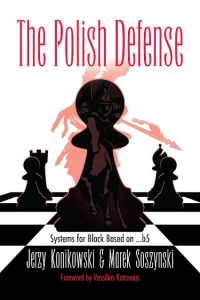 The Polish Defense€25.50
The Polish Defense€25.50 -
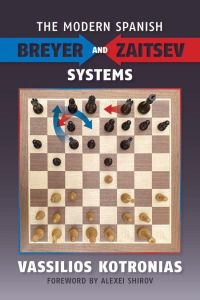 The Modern Spanish€25.95
The Modern Spanish€25.95 -
 The Sicilian Four Knights€24.95
The Sicilian Four Knights€24.95 -
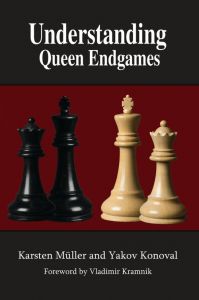 Understanding Queen Endgames€16.95
Understanding Queen Endgames€16.95 -
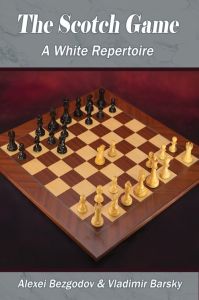 The Scotch Game€25.50
The Scotch Game€25.50 - More from Russell Enterprises

